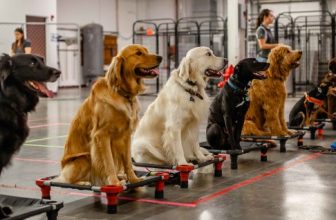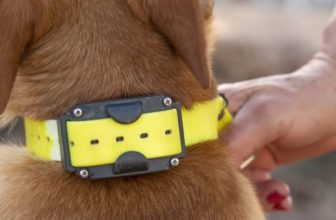
Learn how to train a therapy dog with expert tips and insights. This comprehensive guide covers everything from basic obedience to advanced therapy tasks. Get started on your journey to becoming a therapy dog trainer.
Bringing comfort, joy, and support to individuals in need, therapy dogs play a crucial role in various settings such as hospitals, nursing homes, and schools. Training a therapy dog requires a blend of patience, expertise, and understanding. In this guide, we’ll walk you through the process of training a therapy dog, covering essential steps, techniques, and insights to help you become a successful therapy dog trainer.
How To Train a Therapy Dog
Training a therapy dog is a rewarding journey that demands dedication and the right approach. Here’s a step-by-step breakdown of how to train a therapy dog effectively:
Understanding the Role of a Therapy Dog
Before diving into training, it’s crucial to comprehend the role of a therapy dog. These dogs provide emotional support, companionship, and comfort to people in various environments. Whether it’s offering a warm presence to hospital patients or reducing anxiety in students, therapy dogs make a positive impact.
Assessing Your Dog’s Suitability
Not all dogs are suited for therapy work. Assess your dog’s temperament, behavior, and sociability. Therapy dogs should be calm, friendly, and adaptable to different situations. Consider seeking professional guidance to determine if your dog has the right attributes for therapy work.
Basic Obedience Training
A strong foundation in basic obedience is essential. Teach your dog commands like sit, stay, come, and heel. These commands form the basis for more advanced tasks. Positive reinforcement, such as treats and praise, will motivate your dog to learn and obey.
Socialization is Key
Expose your dog to a variety of environments, people, and other animals. Proper socialization helps your dog remain calm and confident in different scenarios. Gradually increase exposure while observing your dog’s reactions and addressing any fears.
Advanced Commands and Skills
Therapy dogs need to perform specific tasks, such as offering a paw for handshake, lying down beside a person, or remaining still during medical procedures. Train these advanced commands while focusing on gentle and controlled behavior.
Desensitization Training
Therapy dogs encounter noises, sights, and sensations that might be unfamiliar. Train your dog to remain composed in the face of sudden sounds, medical equipment, or unexpected movements. This skill ensures your dog remains unfazed during therapy sessions.
Positive Reinforcement and Bonding
Maintain a strong bond with your dog through positive reinforcement techniques. Reward desired behaviors promptly, using treats, toys, or affection. A strong bond enhances your dog’s responsiveness and willingness to work.
Certification and Evaluation
Seek certification from reputable therapy dog organizations. These evaluations assess your dog’s behavior, training, and suitability for therapy work. Certification boosts your credibility as a therapy dog trainer and assures organizations of your dog’s reliability.
Advanced Techniques for Therapy Dog Training
As you progress in your training journey, consider these advanced techniques to elevate your therapy dog’s skills and effectiveness:
Targeted Task Training
Depending on the setting, therapy dogs might need specialized skills. Train your dog to perform tasks like turning on lights, picking up objects, or alerting to specific sounds. These targeted tasks enhance your dog’s ability to assist individuals with varying needs.
Reading Human Cues
Therapy dogs must read human cues accurately. Train your dog to respond to subtle gestures, facial expressions, and body language. This skill helps your dog provide timely comfort and support to those in need.
Practicing Calmness in Crowds
Therapy dogs often work in crowded spaces. Train your dog to maintain composure amidst bustling environments. This could involve exposure to busy streets, parks, or events, gradually increasing the level of distractions.
Building Resilience
Therapy dogs encounter diverse emotions and situations. Build your dog’s emotional resilience by exposing them to different scenarios, both positive and challenging. This resilience ensures your dog remains a steady source of comfort.
Tailoring Therapy Approaches
Every individual has unique needs. Train your dog to adjust their approach based on the person’s preferences. Some individuals might prefer cuddling, while others might enjoy playing fetch. Flexibility is key in therapy work.
FAQs
Can any breed become a therapy dog?
Yes, any breed can potentially become a therapy dog, as long as they have the right temperament and behavior.
How long does it take to train a therapy dog?
The training duration varies depending on the dog’s starting point and the complexity of tasks. It can take several months to a year or more.
Are there age requirements for therapy dogs?
Therapy dogs can be of various ages, but they should be well-behaved and sociable. Some organizations have age restrictions for evaluations.
Can I train my own therapy dog without professional help?
While it’s possible, seeking guidance from experienced trainers or organizations can significantly enhance your training efforts.
What is the difference between a therapy dog and a service dog?
Therapy dogs provide emotional support to many people, while service dogs are trained to assist a specific individual with disabilities.
Is re-certification necessary for therapy dogs?
Yes, most therapy dog organizations require periodic re-certification to ensure the dog’s skills and behavior are up to date.
Conclusion
Training a therapy dog is a fulfilling endeavor that requires a combination of dedication, patience, and expertise. By following the steps outlined in this guide and embracing advanced techniques, you can prepare your dog to bring comfort and joy to those in need. Remember, each therapy dog is a beacon of hope, making a positive impact on countless lives.




